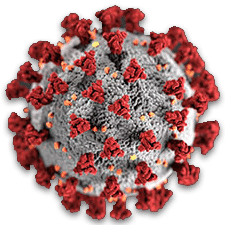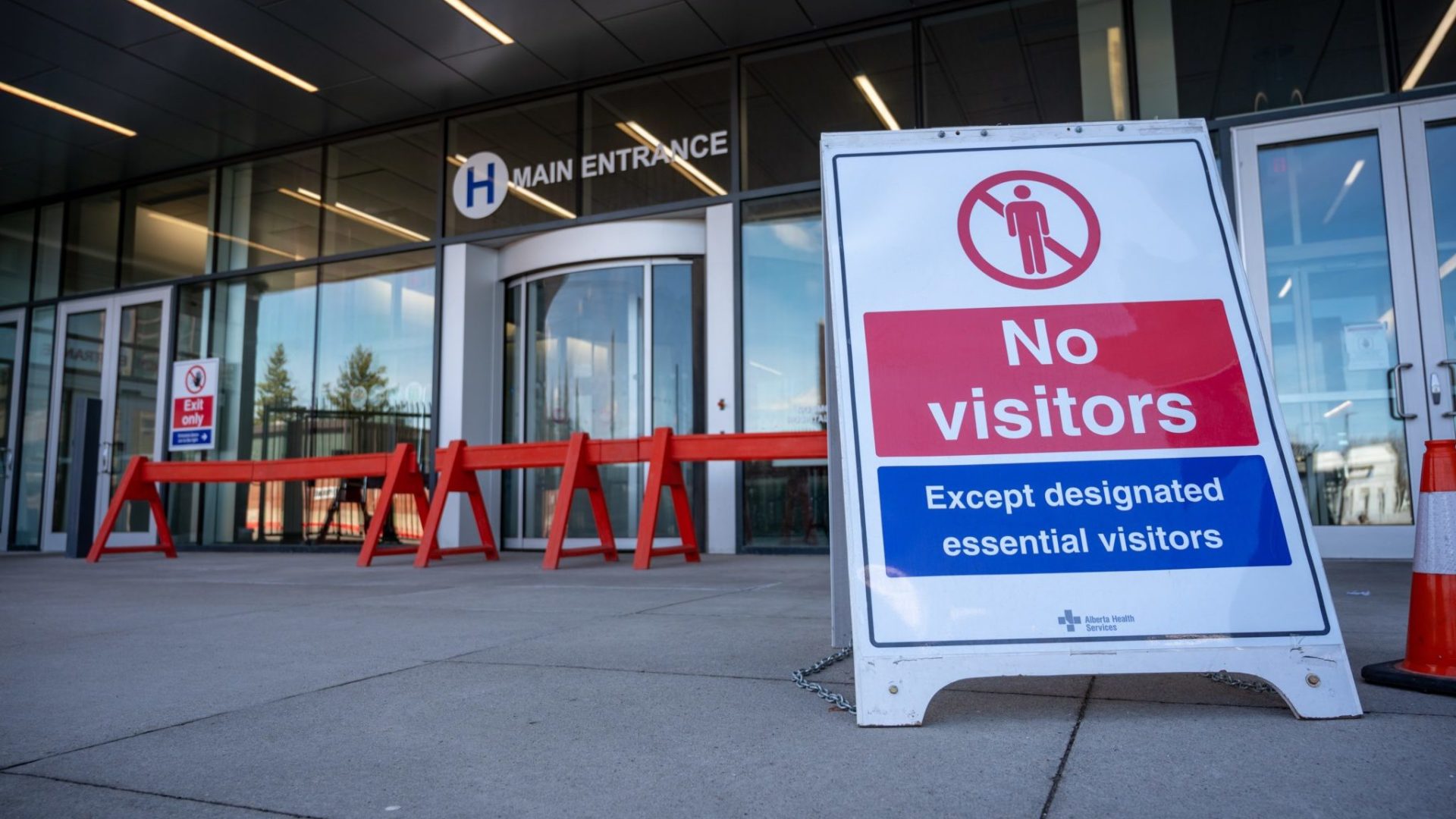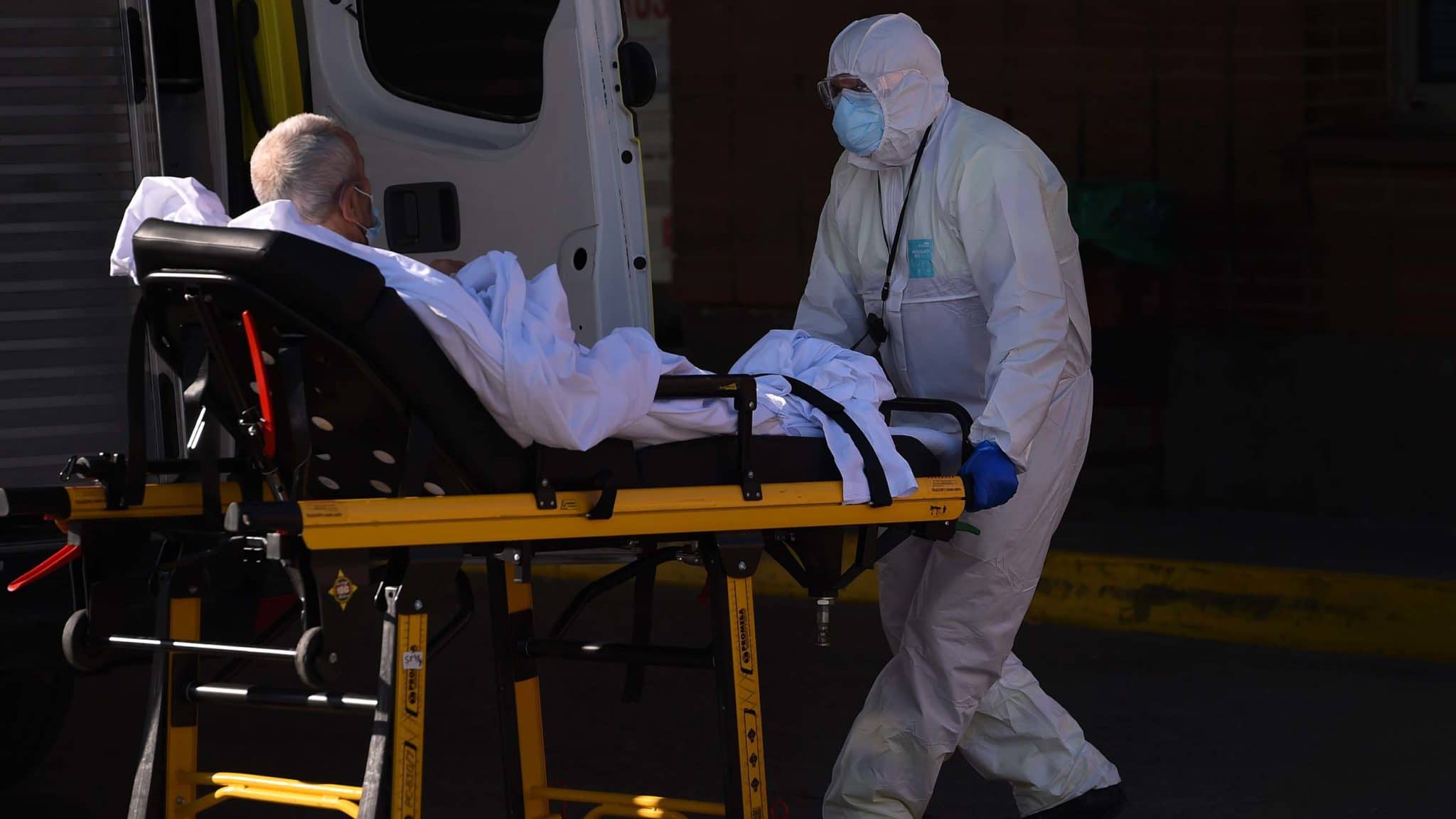I am grateful my dad died last September.
He suffered from a debilitating lung disease and frequently ended up in intensive care, and would likely not have made it through this pandemic without contracting the coronavirus. The virus would have robbed him and those he left behind of some precious final moments of grace and dignity. He would have died alone. Instead, his entire family was lucky to be by his bedside, witness to his final days, hours, and minutes.
The days leading up to my dad’s demise, traumatic as they were, pale in comparison to what patients seriously ill with Covid-19 have to endure. If they survive being on ventilators, then many of them have months and months of arduous recovery ahead. If they die, they die alone, surrounded not by family, but by masked doctors and nurses in full protective gear, far removed from the kind of human contact my father and his family were fortunate to have before he passed.
I came to this realization more than seven months after my father died. The virus had already ravaged Italy, Spain, and New York state when tweets from a doctor from San Francisco started appearing in my Twitter feed. Ethan Weiss, a cardiologist at the University of California, San Francisco, had flown to New York City in late April to volunteer his services at a hospital there. From New York, he began tweeting long accounts of his days as an intensive care unit (ICU) doctor treating seriously ill Covid-19 patients on ventilators. The diary entry that caught my eye read: “Day Four: Not the fucking flu.”
On that day, he lamented about Covid-19, writing, “This is not a way anyone should die. These poor people are tied to a bed for 20-40+ days with a tube shoved down their throats, unable to speak, delirious and disoriented, in pain, drugged, weak, tired, starving, scared, and entirely alone.”
Entirely alone. The thought of my father in such a situation, dying alone, still chills me. This acute aloneness is one of the most heartbreaking aspects of the pandemic. And it has consequences that go beyond the lonely deaths. Health care workers aside, none of us will witness firsthand the intense suffering and death that Covid-19 has wrought. This, Weiss wrote in his day four entry, is the reality of the disease: “You really can’t understand till you see it…and that’s the problem. Nobody is seeing it.”
And without a collective awareness of the loss and grief, without internalizing the scale of suffering, we aren’t emotionally equipped as societies to make the right decisions. The virus hasn’t left us. We have to listen to doctors like Weiss to get a visceral sense of the death and misery that engulfed ICUs around the world, or we risk suffering through it all over again — as already seems to be the case in some states.
I reached out to Weiss for that very reason. Something about his diary entries brought back memories of my dad. Weiss’ accounts of his days in the ICU made me confront thoughts of my father in intensive care, hooked up to oxygen and gasping for breath. I’m not sure what I was hoping to hear, but the more I talked to Weiss, the more certain I became that my dad had been fortunate to die when he did.
Weiss spoke about severely ill patients in ICUs, on ventilators. And in the way the illness typically develops in such patients, he saw a metaphor for the pandemic itself. “It’s the perfect metaphor. You get sick in a matter of days, and it takes months to recover, if you do,” Weiss told me.
“The course of the disease looks exactly like the course of pandemic,” he added.
When it comes to severe Covid-19, the progression from the onset of symptoms to full-blown disease can be rapid. Some end up on mechanical ventilators. While ventilators have become better over the decades, they are nonetheless a traumatic intervention. The procedure can make some patients feel as if they are suffocating and can make them agitated. To avoid this, such patients are often sedated and sometimes even given paralysis-inducing drugs that help synchronize them with the mechanical ventilation. A bridle-like band that wraps around the back of the patient’s neck keeps the ventilator’s endotracheal tube in place and prevents patients from pulling it out. In the case of Covid-19, patients can be sedated and on ventilation for days, even weeks.
Besides all the complications that can challenge someone seriously ill with Covid-19 — such as inflammation of the lungs, bacterial pneumonias, blood clots, embolisms, strokes, heart attacks, and even neurological damage — there’s the added burden of being immobilized for weeks if not months. Weiss, who routinely deals with critically ill patients in his clinical practice, had never seen anything like what he saw in the ICU in New York. If the patients recover, they are far from okay. Their muscles are atrophied. “These patients are profoundly weak to the point where they can barely move even their facial muscles. They’re just completely ravaged and malnourished beyond your wildest imagination,” said Weiss.
“They are not just going to go home and return to their normal life. They are going to need months of intense rehabilitation…That’s going be a pretty profound impact,” he added. For these patients, it’s becoming clear that coming off a ventilator and out of the ICU is only the beginning of a long journey to full recovery.
The pandemic’s trajectory is going to be, sadly, no different. The first wave, especially in places like Italy, Spain, the U.K., and New York state, peaked in about eight to 10 weeks. But the road to normalcy, whether for countries that got past the first wave or for those that are still in the throes of it (including the big three: the U.S., Brazil, and India), is going to be long, hard, and painfully slow. We are already seeing the effects of trying to get back to business as usual — in all meanings of the phrase — in states like California, Arizona, Texas and Florida. It’s not going to be easy.
 |
For all of Undark’s coverage of the global Covid-19 pandemic, please visit our extensive coronavirus archive. |
When it comes to recovering from the pandemic, there are further lessons in how a patient is brought back to consciousness and to breathing without support. Doctors have to carefully control the levels of sedation as they wean the patient off the ventilator. Do it wrong and the patient can get agitated, have trouble breathing, or experience a rise in blood pressure, which can lead to further complications.
“That’s mostly what we talk about on a daily basis in the hospitals,” Weiss told me. “How to adjust the sedation and how to adjust the ventilator setting so that you can potentially try to get somebody off [the ventilator]. And in order for them to come off, they have to be awake enough to breathe on their own. So it’s a very challenging dance.”
Towns, cities, states, and countries will also have to dance this delicate dance. A lockdown is like sedation. Getting the society humming again is like returning to consciousness and to breathing on our own. Until we have a vaccine, the ending of lockdowns and the churnings of economic and social activity will have to be carefully choreographed, with the right mix of testing, tracing, and targeted quarantines — and strict enforcement of simple public health measures such as wearing masks in public. We are in danger of getting it wrong and going back to where we started. ICUs will be flooded. Patients will die alone. And their families and friends will be unable to take part, the way I could with my father, in the most profound act possible when death is imminent: bearing witness.
Anil Ananthaswamy is an award-winning journalist, author, and a 2019-20 MIT Knight Science Journalism Fellow.












Comments are automatically closed one year after article publication. Archived comments are below.
It is so true, I also am thankful that he passed away in 2017 at the age of 90 due to pneumonia and COPD and CHF, though he passed in such away where tubes and machines were attached to him just to help him breathe, but to see his eyes trying to say that he loves me and that he appreciates my presence. And that he knows I am there for him till I saw the light from his eyes fade away, No one, especially our parents deserve to die alone.
And yes this virus is saying something about us, about our humanity or lack of it.